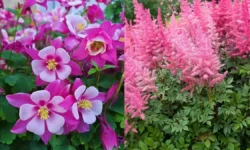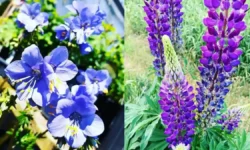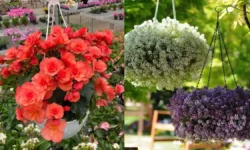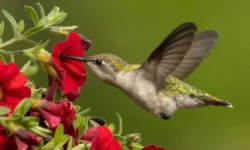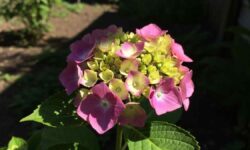Rhododendrons are prized for their stunning clusters of flowers and glossy evergreen leaves, making them a favorite among gardeners. Healthy rhododendron leaves are typically flat, vibrant, and leathery. However, many gardeners become concerned when they notice rhododendron leaves curling. This issue is not only unsightly but also a sign that the plant is stressed or dealing with an underlying problem.
Understanding why leaves curl is crucial to restoring your plant’s health. Curling can indicate environmental stress, pest infestations, fungal infections, or improper care. In this article, we will explore the most common reasons for leaf curling and provide practical solutions to help your rhododendron recover and thrive.
Table of Contents
Why Rhododendron Leaves Curl
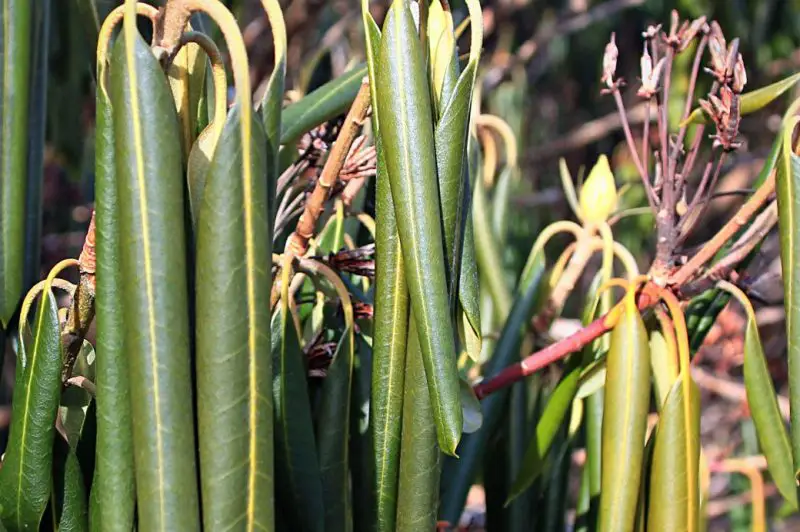
Environmental Stress and Temperature Fluctuations
One of the most common causes of rhododendron leaves curling is environmental stress, particularly due to extreme temperatures. Rhododendrons are sensitive to cold weather, and their leaves curl inward as a natural response to freezing conditions. This curling helps reduce water loss by limiting the surface area exposed to cold, dry winds. While this is a normal adaptation, prolonged exposure to harsh winter conditions can cause leaf damage and even permanent deformation.
High temperatures can also stress the plant, especially when combined with dry soil. In hot summer weather, curling can indicate that the plant is trying to conserve moisture. Unlike cold-induced curling, heat-related curling often comes with wilting or yellowing leaves, suggesting that the plant is dehydrated and struggling to maintain proper water balance.
Water Stress: Overwatering and Underwatering
Water imbalance is another major factor causing leaf curling. Rhododendrons prefer consistently moist but well-drained soil. When the soil becomes too dry, the plant’s roots cannot absorb enough water, leading to dehydration. Leaves respond by curling inward to reduce water loss through transpiration. This type of curling is often accompanied by brittle or crispy leaf edges.
On the other hand, overwatering can also trigger curling by suffocating the roots. Excess moisture can lead to root rot, reducing the plant’s ability to take up water and nutrients. The leaves may curl and appear limp, and in severe cases, they may turn yellow or brown. Checking soil moisture levels is crucial to determining whether the plant is suffering from too much or too little water.
Nutrient Deficiencies and Soil Conditions
Rhododendrons are acid-loving plants that thrive in slightly acidic, nutrient-rich soil. If the soil pH is too high or the nutrients are imbalanced, the plant may show signs of stress, including curled leaves. A lack of essential nutrients, particularly magnesium or nitrogen, can weaken the plant’s overall health and lead to leaf deformation. Magnesium deficiency often causes yellowing between the leaf veins before curling becomes noticeable.
Compacted or poorly drained soil can also restrict root growth and oxygen availability, leading to nutrient deficiencies. Even when nutrients are present in the soil, damaged or stressed roots may not be able to absorb them efficiently, causing visible symptoms on the leaves.
Pests and Insect Damage
Certain pests can cause rhododendron leaves curling as they feed on the plant’s sap. Aphids, lace bugs, and spider mites are common culprits. These insects pierce the leaf surface, sucking out moisture and nutrients, which leads to distorted growth and curling. Aphids often leave behind a sticky residue called honeydew, which can attract sooty mold. Lace bugs create small yellow or white speckles on leaves, while spider mites may leave fine webbing.
If pests are the cause, you will likely notice other signs, such as discolored spots, stippling, or the presence of insects on the underside of leaves. Pest infestations weaken the plant, making it more susceptible to fungal diseases and environmental stress.
Fungal and Bacterial Infections
Fungal and bacterial diseases can also cause curling in rhododendron leaves. Fungal infections such as powdery mildew or leaf spot can distort leaf tissue, causing it to curl and twist. Powdery mildew appears as a white, powdery coating on the surface of leaves, while leaf spot creates dark, irregular lesions.
Bacterial blight, another serious disease, can cause blackened, curled leaves that eventually drop off. High humidity, poor air circulation, and overhead watering encourage these diseases to spread quickly. Once infections become severe, they can damage the plant’s overall growth and flowering ability.
Transplant Shock or Root Damage
Recently transplanted rhododendrons or those with damaged roots may exhibit curling leaves as they struggle to establish themselves in new soil. Transplant shock occurs when the plant experiences sudden changes in its growing environment, such as soil type, moisture level, or sunlight exposure. Root damage caused by digging, pests, or disease can also reduce water and nutrient uptake, leading to curling and wilting.
How to Fix Rhododendron Leaves Curling
Adjusting Watering Practices
Correct watering is one of the most effective ways to fix leaf curling. Rhododendrons need evenly moist soil, so check the soil moisture regularly. If the soil feels dry an inch below the surface, water the plant deeply to rehydrate the roots. Avoid frequent shallow watering, as it encourages weak root systems.
If overwatering is the issue, improve drainage by loosening compacted soil or amending it with organic matter such as compost or pine bark. Containers should have proper drainage holes to prevent water accumulation. Allow the soil to dry slightly before watering again to avoid root rot.
Improving Soil Quality and Nutrient Balance
Testing the soil pH is essential to ensure it remains within the optimal range of 4.5 to 6.0 for rhododendrons. If the soil is too alkaline, consider adding sulfur or acidic organic mulch, such as pine needles or peat moss, to lower the pH gradually. Fertilize with a balanced, slow-release fertilizer designed for acid-loving plants to correct nutrient deficiencies. Applying fertilizer in early spring or after flowering helps strengthen the plant and promote healthy leaf growth.
Mulching around the base of the plant can also improve soil conditions. A two- to three-inch layer of organic mulch helps retain moisture, regulate soil temperature, and prevent weed competition. Avoid piling mulch against the stem to reduce the risk of rot.
Providing Protection Against Extreme Temperatures
If cold weather is causing rhododendron leaves curling, provide winter protection to reduce stress. Applying mulch before winter can insulate the roots, while burlap screens or windbreaks help shield the plant from harsh winds. In hot climates, partial shade during the hottest part of the day can prevent heat stress and excessive water loss.
For potted rhododendrons, consider moving them to a sheltered location during extreme weather conditions. Avoid sudden changes in sunlight or temperature, as these can worsen stress-related curling.
Controlling Pests Effectively
Inspect the leaves regularly, especially the undersides, for signs of pests. If an infestation is detected early, washing the leaves with a strong jet of water can remove aphids and spider mites. For more persistent pests, apply insecticidal soap or horticultural oil, which are safe and effective options for controlling soft-bodied insects.
Encouraging beneficial insects like ladybugs or lacewing larvae can also help keep pest populations under control naturally. Maintaining healthy plants through proper care makes them less attractive and more resistant to pest attacks.
Managing Fungal and Bacterial Infections
For fungal infections, prune and dispose of affected leaves to prevent the spread of spores. Ensure proper air circulation by spacing plants appropriately and trimming overcrowded branches. Avoid overhead watering to keep the foliage dry. If necessary, apply a fungicide recommended for rhododendrons, following the manufacturer’s instructions carefully.
Bacterial infections are harder to manage, but removing infected plant parts and improving overall plant health can limit damage. Always sterilize pruning tools between cuts to prevent spreading pathogens to healthy tissue.
Helping Plants Recover from Transplant Shock
If leaf curling is due to transplant shock, patience and consistent care are key. Water the plant regularly but avoid overwatering, and provide shade until the plant establishes its root system. Adding organic mulch helps regulate soil temperature and moisture. Avoid fertilizing immediately after transplanting, as this can further stress the plant. Once new growth appears, resume normal feeding and care practices.
Preventing Rhododendron Leaves Curling
Choosing the Right Planting Location
Prevention starts with selecting the ideal planting location. Rhododendrons thrive in partial shade with protection from harsh afternoon sun. Ensure the soil is well-drained and rich in organic matter. Avoid planting in low-lying areas where water tends to collect, as this increases the risk of root rot.
Regular Monitoring and Maintenance
Inspecting the plant regularly allows early detection of problems before they become severe. Check for pests, discoloration, or unusual leaf curling, and address any issues promptly. Pruning dead or damaged branches promotes better air circulation and reduces the risk of fungal infections.
Consistent Care Throughout the Year
Providing consistent care year-round is the best way to keep rhododendron leaves healthy. Watering deeply during dry periods, fertilizing appropriately, and protecting the plant during extreme weather conditions all contribute to strong, resilient growth. A healthy rhododendron is less likely to experience severe leaf curling and recovers faster if stressed.
FAQs About Rhododendron Leaves Curling
Why do rhododendron leaves curl in winter?
Leaves curl in winter to reduce water loss and protect themselves from cold, dry winds. This is a natural response and usually not harmful.
Will curled rhododendron leaves return to normal?
If the curling is caused by environmental stress, the leaves often return to normal when conditions improve. Severe damage, however, may be permanent.
Can overwatering cause rhododendron leaves to curl?
Yes, overwatering can lead to root problems, reducing water uptake and causing leaves to curl and wilt.
How do I know if pests are causing the curling?
Check the underside of leaves for insects, eggs, or webbing. Pest-related curling is often accompanied by discoloration or sticky residues.
What is the best way to prevent leaf curling in rhododendrons?
Consistent watering, proper soil conditions, pest control, and protection from extreme weather are the best preventive measures.
Conclusion
Rhododendron leaves curling is often a sign that the plant is under stress, whether from environmental conditions, pests, diseases, or improper care. Identifying the underlying cause is essential to restoring the plant’s health. By adjusting watering practices, improving soil quality, controlling pests, and protecting against temperature extremes, you can help your rhododendron recover and maintain its lush, vibrant foliage.
With proper care and preventive measures, rhododendrons can thrive for many years, adding beauty and color to your garden. Healthy leaves are not just a sign of good care but also ensure that the plant produces its iconic, stunning blooms year after year.

